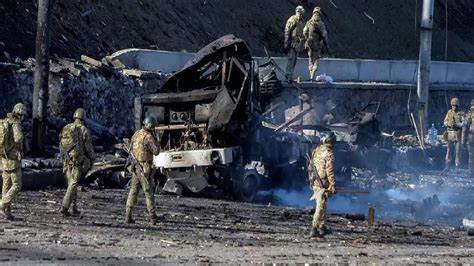Ukrainian resistance to the Russian invasion has shown strength that has surprised many observers, but one international expert pointed out how historical precedent bodes poorly for Moscow should its forces be unable to subdue Ukraine quickly under current Russian troop levels.
“The Russian army is overextended and in a precarious position if Ukraine becomes a protracted war,” Seth Jones, vice president of the Center for Strategic and International Studies, said in a social media post.
“Assuming 150,000 Russian soldiers in Ukraine and a population of 44 million, that is a force ratio of 3.4 soldiers per 1,000 people. You can’t hold territory with those numbers,” Jones said.
Jones compared the current Russian force ratio to occupations after previous wars around the world, saying successful occupations had force ratios that were “astronomically higher.”
For example, he said:
- The Allied forces occupying Germany in 1945 had 89.3 troops to 1,000 inhabitants.
- NATO forces in Bosnia in 1995 had 17.5 troops to 1,000 inhabitants.
- NATO forces in Kosovo in 2000 had 19.3 to 1,000.
- And international forces in East Timor in 2000 had 9.8 to 1,000.
“High numbers of troops and police are critical to establish basic law and order,” Jones said.
“In fact, the number of Russian soldiers in Ukraine aren’t even enough to hold any major cities for long.”
And if Russian occupiers face a guerrilla war in the event the Ukrainian government falls, the odds won’t be in Russia’s favor, he said.
“They will be in serious danger of being picked apart by Ukrainian insurgents.”

